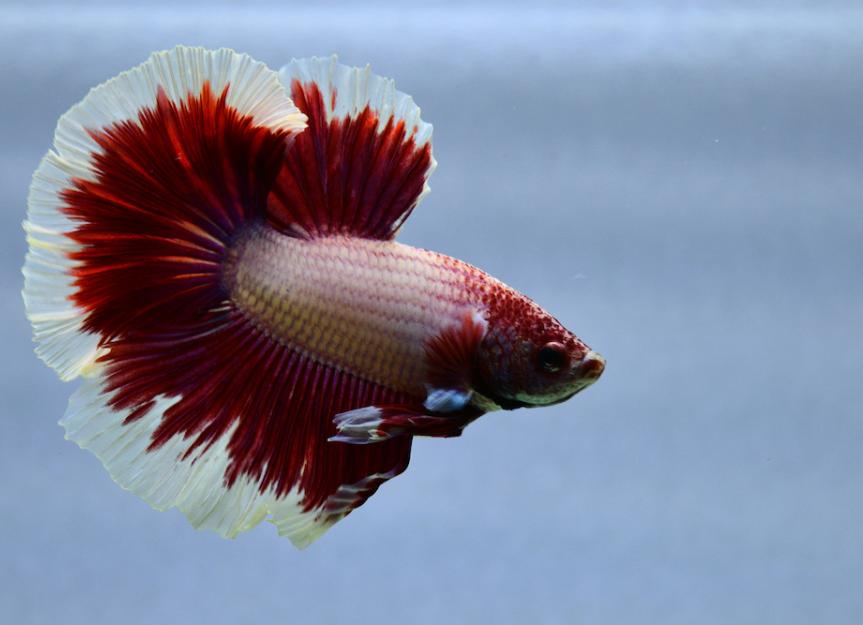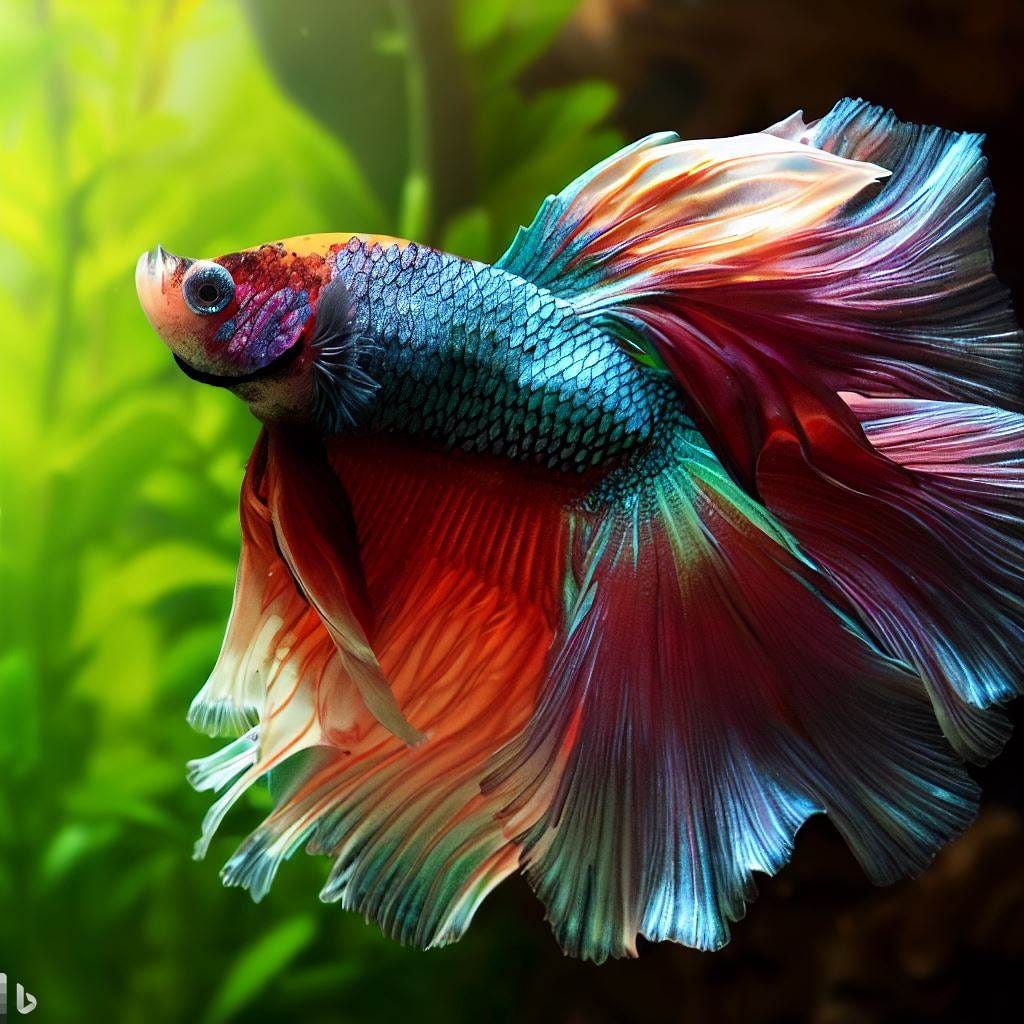Understanding Betta Fish Actions: What Every Owner Should Know
Understanding Betta Fish Actions: What Every Owner Should Know
Blog Article
Everything About Betta Fish: Recognizing Their Distinct Demands, Habits, and the very best Practices for Optimum Care
Understanding the special demands and actions of Betta fish is necessary for any aquarist wanting to supply optimal treatment. These fascinating creatures, belonging to the cozy waters of Southeast Asia, display distinct territorial propensities and require details ecological problems to prosper. From picking the right container size to acknowledging possible wellness concerns, numerous elements dramatically influence their wellness. As we check out these elements even more, the implications for both novice and skilled fish keepers end up being significantly evident, questioning concerning how finest to fit these remarkable fish in our homes.
Betta Fish Introduction
Although commonly admired for their lively colors and flowing fins, Betta fish, scientifically referred to as Betta splendens, are intricate animals that call for certain like flourish. Originating from Southeast Asia, these freshwater fish are recognized for their territorial nature and one-of-a-kind habits. Betta fish display sexual dimorphism, with men showing a lot more vibrant colors and longer fins than ladies.
Their hostile tendencies, particularly amongst males, necessitate mindful consideration when housing them. Bettas are typically kept in single-specimen containers to avoid territorial disputes. Nevertheless, they can coexist peacefully with certain compatible varieties in larger community containers, offered the setting satisfies their needs.

To make sure optimum treatment, aquarists must understand their distinct behavioral characteristics, dietary requirements, and habitat demands. betta fish. With proper attention, Betta fish can display their dynamic characters and thrive in a well-kept aquarium setting
Natural Habitat and Environment
Betta fish flourish in a diverse variety of all-natural habitats, primarily found in the superficial waters of Southeast Asia, including rice paddies, swamps, and slow-moving streams. These environments are identified by warm temperatures, generally in between 75 ° F and 82 ° F(24 ° C and 28 ° C ), and a pH degree ranging from 6.5 to 7.5, which is ideal for their wellness and wellness.
In their natural environments, Betta fish are accustomed to thick plant life, offering both shelter and reproducing grounds. The visibility of plants such as floating water lilies and thick yards not only offers security from predators but additionally adds to the oxygenation of the water, which is essential for their respiratory system requirements. Additionally, these atmospheres frequently have locations of still water, allowing Betta fish to show their all-natural behaviors such as bubble nesting.
Recognizing the natural environment of Betta fish is essential for fish tank enthusiasts. Duplicating these conditions-- with water temperature level, pH balance, and the addition of real-time plants-- can substantially enhance the general wellness and longevity of these fascinating fish, guaranteeing they flourish in a home fish tank setting.
Social Habits and Interactions
Recognizing the social actions and communications of Betta fish is essential for successful aquarium monitoring. Betta fish, or Siamese battling fish, are understood for their one-of-a-kind behavior attributes, identified largely by territoriality and aggressiveness.
Conversely, women Bettas show much less hostile actions and can exist side-by-side in teams, called sororities, if presented appropriately. It is vital to check their interactions closely, as hierarchy and prominence can lead to disputes. Comprehending the dynamics within a Betta neighborhood is important; establishing concealing areas and making sure adequate space can mitigate aggressiveness.
On top of that, Betta fish may likewise display inquisitiveness and social actions towards other varieties. While they can exist together wikipedia reference with certain non-aggressive container companions, it is vital to choose compatible varieties to prevent tension and aggressiveness. Generally, recognizing these social communications is essential to fostering an unified aquarium setting for Betta fish.
Important Treatment Guidelines
Providing correct care for Betta fish is vital to their wellness and wellness. To make certain a flourishing environment, it is important to preserve optimal water problems. The water temperature must be maintained between 76 ° F and 82 ° F(24 ° C to 28 ° C), while pH degrees should range from 6.5 to 7.5. Normal water modifications-- roughly 25% once a week-- help preserve water top quality.
Betta fish need an ideal container size; a minimum of 5 gallons is suggested to give sufficient room for swimming and hiding. Consist of designs and plants to develop a stimulating setting, but prevent sharp things that might damage their fragile fins.

Lastly, ensure the container is geared up with a filter to maintain the water tidy, yet utilize a gentle filter to prevent solid currents that can worry the fish. By following these necessary treatment standards, owners can advertise a healthy and balanced and vivid Betta fish.
Common Wellness Issues and Solutions
In the care of Betta fish, recognition of common wellness concerns is necessary for maintaining their wellness. One prevalent concern is fin rot, typically brought on by bad water top quality or microbial infection. Symptoms include frayed or discolored fins. To treat fin rot, boost water conditions and take into consideration making use of a broad-spectrum antibiotic.
One more usual condition is ich, a parasitical infection defined by white places on the fish's body (betta fish). Treatment includes raising water temperature and including fish tank salt to the tank, as this can help remove the bloodsucker
Swim bladder problem is likewise frequently observed, resulting in buoyancy troubles. This condition may arise from overfeeding or irregularity. A fasting period of 24-48 hours, complied with by a diet plan of blanched peas, can give relief.
Lastly, bettas might deal with velour disease, suggested by a gold dust-like look on their skin. Treatment normally calls for medication specifically developed for outside bloodsuckers, along with boosted tank hygiene.
Routine surveillance of water click here to find out more parameters, maintaining a clean environment, and offering a balanced diet regimen are critical preventive measures. By attending to these health and wellness issues quickly, Betta fish can lead healthier, much more lively lives.
Final Thought
In recap, effective betta fish treatment calls for an understanding of their one-of-a-kind demands and actions. Giving an ideal setting, consisting of ideal container dimension and water problems, is crucial for their health. In addition, identifying their territorial nature and making certain ample concealing areas can stop aggressiveness. Routine tracking of health and water quality, in addition to a well balanced diet plan, contributes to the longevity and vibrancy of betta fish. Complying with these standards will foster a successful water community for these captivating animals.
Report this page